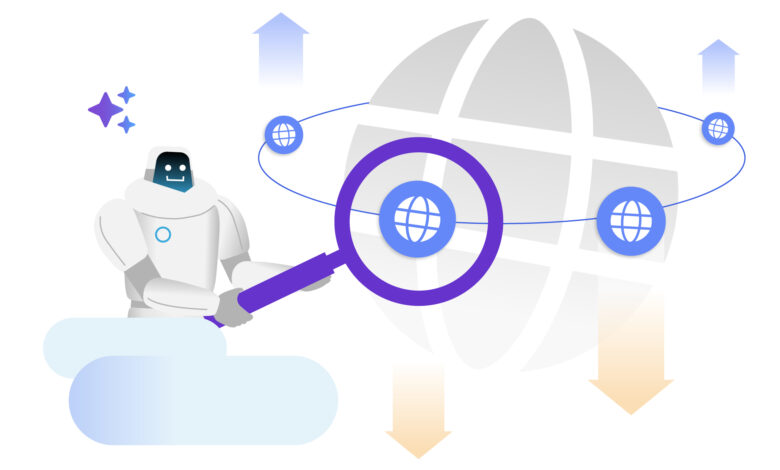
Artificial Intelligence is everywhere—or so it seems. It’s a buzzword dominating headlines, investor pitches, and tech conferences. You can hardly scroll through your LinkedIn feed without seeing the latest claim about how AI is revolutionizing every industry. And yet, as someone who spends her days researching and analyzing the digital presence of small businesses across the United States, I have to ask: has AI truly taken over small business?
Spoiler: not even close.
Let’s start with the numbers. According to a 2024 Verizon report, 38% of small and medium-sized businesses in the US are using AI in some capacity. Sounds impressive, right? But here’s the thing—when you dig into that number, context matters. What counts as “using AI”? Are we talking about teams building AI tools from scratch, or simply someone using Grammarly to check an email?
From my perspective as a marketing researcher working on AI-focused products, and someone who manually reviews hundreds of small business websites monthly, the real picture is far more modest.
The Three Main Areas Where AI Could Shine
In my work, I see three primary domains where AI could meaningfully support small businesses:
- Content creation and marketing
- Customer service
- Internal operations and scheduling
Let’s break them down—and see what’s actually happening.
- Content Creation: The Accidental AI Users
The most common application of AI I’ve observed is in content generation. And in most cases, it’s accidental. Business owners using email marketing tools or CRM platforms often don’t even realize they’re interacting with AI. The copy suggestions, automatic image tagging, or blog idea generators are AI-powered—but they’re not branded as such.
This is AI as a helpful assistant: supporting with everyday tasks like polishing product descriptions, generating subject lines, or drafting FAQs. It’s low-stakes, low-awareness usage—and it barely scratches the surface of what AI can do.
Many small businesses stop at these tiny wins because the leap from “writing better captions” to “automating my marketing pipeline” still feels too far—and too abstract.
- Customer Service: Big Potential, Tiny Footprint
This one surprised even me. According to our internal analysis of thousands of US small business websites, only 5.9% include a chat widget at all. And of that group, only 1.27% offer a genuine chat experience—either through an AI-powered chatbot or a live chat with a human agent. The rest? They’re basically bait-and-switch forms that pop up pretending to chat, but only ask for your email and never respond.
Let that sink in: in an era where LLMs can carry nuanced conversations and solve customer issues instantly, less than 2% of businesses offer any real-time interaction on their site.
There is a massive opportunity here. AI chat systems are cheaper and easier to deploy than ever. And yet, the majority of local businesses are missing out on the trust, retention, and conversion benefits they bring.
This is explored further in this blog post—worth a read if you’re curious about the data.
- Scheduling & Internal Operations: Still on Pen and Paper?
The final frontier is internal ops—scheduling, bookings, reminders, task delegation. And here, things look even more analog than I expected.
Take service-based businesses (salons, coaches, repair professionals). Our scan revealed that only 3.14% of these businesses use any kind of online booking system on their website.
That’s astonishing, especially when you consider that 67% of customers say they prefer booking online over calling or messaging.
And again—those that do use booking systems usually stick with the basics. But modern systems can do much more. Imagine an AI-enhanced calendar that:
- Suggests optimal times based on both client and staff availability
- Detects conflicts or staff burnout patterns
- Reschedules automatically in case of cancellations
- Prioritizes high-value clients in tight schedules
These features exist, and they’re not even that expensive. But businesses can’t adopt them if they haven’t taken the first step—digitizing their operations at all. We wrote more on this in our piece about scheduling systems.
Final Thoughts: The Readiness Gap
Here’s the honest truth: big companies are using AI to save millions. Small businesses? They’re still figuring out how to connect their contact form to an email inbox.
And that’s not entirely their fault. The real issue is what I’d call the readiness gap. Many small businesses haven’t even completed the digital transformation phase yet—no integrated systems, no data pipelines, no CRMs. They’re stuck juggling dozens of disconnected tools, or worse, doing everything with pen, paper, and Post-Its.
The good news? They can leapfrog.
Modern tools now come with AI built in by default. A good platform for content, scheduling, email campaigns, or team management already has AI embedded—no separate integration needed. The trick is finding tools that are simple enough to use, yet powerful enough to scale.
That’s why we believe in all-in-one ecosystems. When everything is under one roof—from lead capture to scheduling to messaging—businesses can start benefiting from AI without even thinking about it as “AI.”
And maybe that’s the future: not AI as a shiny feature, but AI as quiet infrastructure—helping small businesses run smarter, smoother, and more human.





